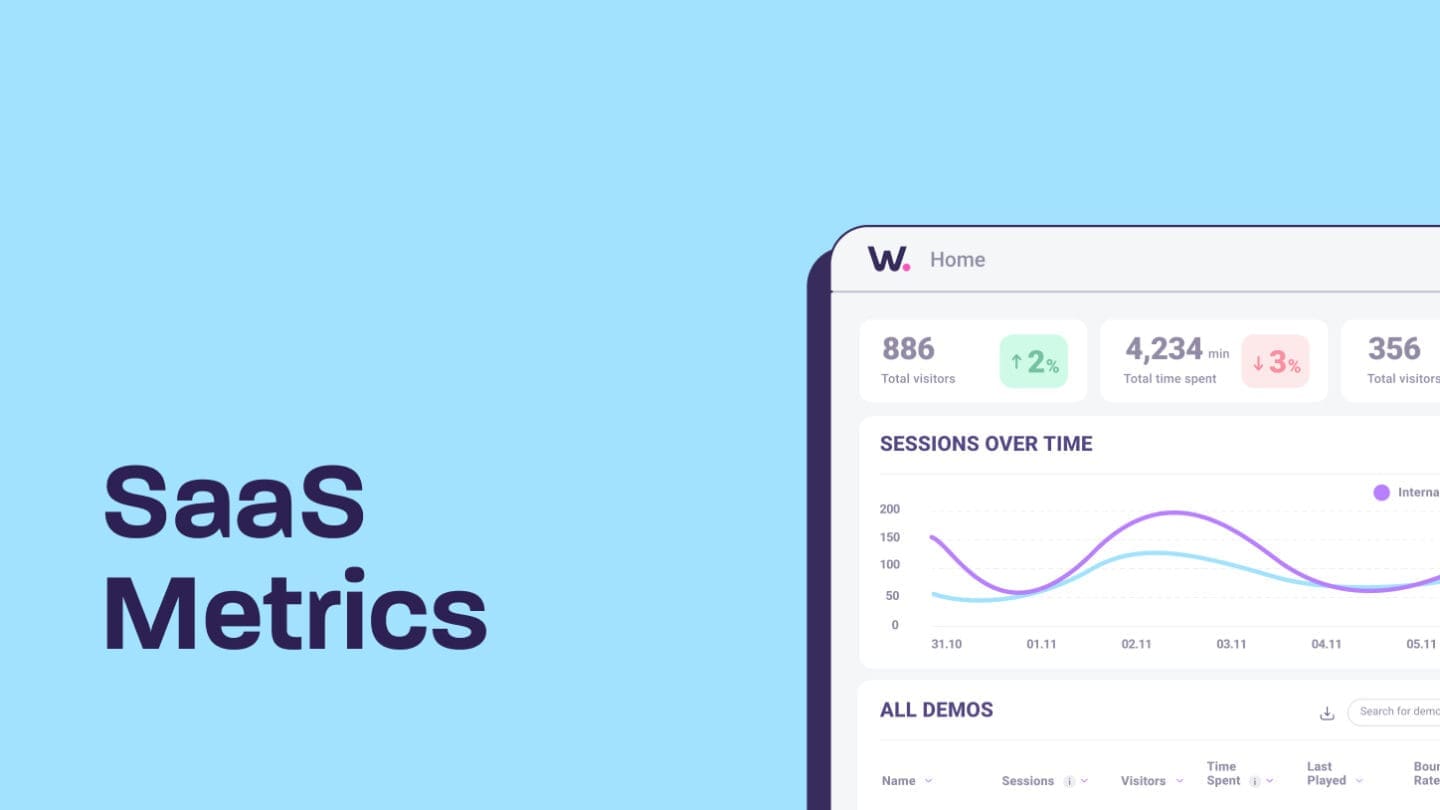A go-to-market strategy is a plan for how to sell your company’s products or services. There are many different strategies a company can use when it’s getting ready to hit the market. So many that sometimes the selection may be overwhelming.
But if you ask yourself the right questions and answer them truthfully, then with a bit of creativity, your go-to-market strategy will be sure to succeed. Moreover, by doing so—and following these proven steps—you’ll increase your chances of crafting an effective marketing campaign that leads to exponential growth! So don’t hesitate to launch your successful go-to-market plan today.
Successful SaaS go-to-market strategy starts with the mission matrix
The mission matrix is an easy way to map out your go-to-market strategy. It’s a 3×3 visual grid that combines your possible sales strategies with the potential target companies.
To fill out the mission matrix, you must ask yourself two fundamental questions:
- Target company – Who are we trying to sell to?
Possible answers: Small and medium-sized businesses, mid-sized, enterprises.
- Sales strategy – How are we planning to sell to them?
Possible answers: self-service ( low/no touch), inside sales or partnerships (medium touch), enterprise sales (high touch).
There is more to a B2B SaaS go-to-market strategy than who and how. The who and how are highly dependent on the price point, product-market fit, user experience, and more. Coming up with an effective go-to-market plan consists of a lot of moving parts.

Types of SaaS go-to-market strategies
There are several ways to market your SaaS product, but the basis for a successful go-to-market strategy is understanding who you’re selling to and how they make the decision to buy. For example, smaller businesses have simple decision-making processes, while enterprises have many hoops to jump through before deciding to buy.
But there’s so much else that goes into choosing the right go-to-market strategy, such as pricing. By the time you finish reading this article, you’ll have a better idea about your target audience and how you should balance marketing and sales for a more significant impact.
Marketing led go-to-market strategy
Best suited for SMB and mid-sized companies that require a low or no-touch approach.
The marketing-led go-to-market strategy for SaaS products is right for you if millions of small and medium-sized businesses out there can quickly adapt your SaaS product and your price point is relatively low.
Typically when you market to SMB to mid-sized companies, you want to make purchasing easy, practical, and appealing. Because there are so many potential clients, the low/no-touch approach makes sense. You’ll need a solid marketing-focused game plan that provides users an intuitive self-service platform that’s also highly automated so you can continue growing your company.
Marketing led approach means the most critical part of your go-to-market strategy is effectively communicating your value to potential users. A good value proposition will convince prospects they need and want what you are selling. To strengthen and keep the marketing efforts going, consider adding a referral program that encourages users to invite friends to maximize your efforts and traffic.
If you get this viral loop right, then people who may have never come across your product before can be swayed into buying from you with ease.
To keep the momentum going, focus on content, PPC (pay-per-click), SEO (search engine optimization), and social media content to amplify your success.
B2B SaaS companies using marketing-led as go-to-market strategy:
Typeform, Mention, Hubstaff
Pros and cons of marketing-led go-to-market strategy
Pros:
- High volume of potential customers
- Low customer acquisition cost
- Highly automated
- Short sales cycles
Cons:
- Low average revenue per account
- High volume of customers
- Highly talented CMO
Pricing is an essential factor to consider when you go for the marketing-led go-to-market strategy. When you’re just getting started and no one knows your name, relying exclusively on the no-touch approach is probably not a good idea.
Sales led go-to-market strategy
Best suited for enterprise companies that require a high touch approach.
Have you ever tried selling to big businesses? SaaS Go-to-market strategy sales process is much different from a small or mid-sized company. When selling to an enterprise, it’s all about solutions and not tools – which means customized offerings for each enterprise customer. So naturally, it requires a high number of touchpoints to complete the sale.
Selling to enterprises takes a lot of resources, time, patience, and mad sales skills because they usually have unique demands, and as we mentioned, they require heavy customizations.
To convert your potential enterprise prospects into consumers, you will need to develop strong marketing and sales teams that collaborate and have the ability and talent required to:
- target decision-makers within target organizations
- get them all in the same room for the demo.
There are usually many decision-makers in enterprises, so the sales cycles are typically long. Just remember to be patient and persistent, and don’t forget to follow up.
B2B SaaS companies using sales-led as go-to-market strategy:
Salesforce, Workday, Bynder
Pros and cons sales-led go-to-market strategy
Pros:
- High revenue per account
- Potential sales to daughter companies and partners
- Powerful marketing tool
Cons:
- Low volume of potential customers
- High cost per acquisition
- High level of customization
- Demanding customers
- Long sales cycles
- Patience and persistence to build trust
While each enterprise user might seem like an opportunity worth their weight in gold, this isn’t always so. Remember that if there’s only one consumer on whom you depend and they leave unexpectedly-you’re out of business, so plan accordingly.
Hybrid go-to-market strategy
Best suited for mid-sized companies that require a balance of low or and high touch approach.
The hybrid go-to-market strategy requires a careful balance of great marketing and sales; you need to have a mid-touch sales strategy targeting organizations with mid revenue per account and mid-level cost per acquisition.
One of the keys to success is developing a go-to-market funnel that combines the right amount of automation with a helping hand from your sales and customer success teams along the way, depending on the customer.
You’ll still need a solid marketing plan that enables automated purchases. Still, you should also be ready for “enterprise style” mid-size companies that require the whole shebang, aka demos and meetings with multiple decision-makers and continuous follow-ups. When done right, the hybrid go-to-market strategy can lead you down an efficient and highly profitable path.
A hybrid go-to-market strategy is often a viable option, but you need to make sure your product meets the needs of potential customers, or it will have trouble gaining traction.
B2B SaaS companies using hybrid go-to-market strategy:
Atlassian, MOZ, Shopify
Pros and cons of hybrid go-to-market strategy
Pros:
- Mid-sized volume of potential customers
- Mid-level customer acquisition cost
- Semi-automated processes
- Some short sales cycles
Cons:
- Mid-sized volume of potential customers
- Highly talented sales reps
- Some long sales cycles
- Market-product fit confirmation
How Walnut can help your go-to-market strategy
No matter which go-to-market strategy you’ll choose for your SaaS product, it can only take so far down the sales cycle, especially if you’re just starting out.
When you’re a young SaaS product, you don’t always know your unique selling proposition and where you should focus your sales and marketing efforts. SaaS products usually have various features and benefits, and until you gain some traction, you won’t know which one is the most attractive to your clients.
But what if you could have data that can help you shape better marketing and sales strategies that will put you ahead of the competition? Data you can obtain during the product demo phase, even if the sale doesn’t go through.
Let’s assume you could offer personalized interactive demos that will let you provide a sales experience out of this world and collect valuable and actionable data in the process. Well, you can.
Walnut lets you create personalized and interactive demos for every demo request you get. This opportunity opens the door to a whole new sales experience for you and your clients because each demo comes with built-in analytics and data collection. Data you can use to sharpen your sales strategy. The best part is that Walnut is designed to scale along with your SaaS.
Ready to take your sales experience to the next level? Request a demo!



